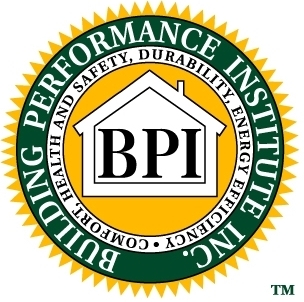 Well just like the RESNET class I wrote about last week, I decided to combine the last two days of my BPI Building Analyst training from Clean Edison together. I am also happily writing this article from the comfort of my house this time, instead of the hotel room. With that being said, sorry folks, I will not be divulging any of the test questions.
Well just like the RESNET class I wrote about last week, I decided to combine the last two days of my BPI Building Analyst training from Clean Edison together. I am also happily writing this article from the comfort of my house this time, instead of the hotel room. With that being said, sorry folks, I will not be divulging any of the test questions.
Field Day:
First off, let me re-iterate, I like the instructor and think that he did a great job, but I would love to know how many audits he has really done with the equipment he was using. My guess would be zero using the Retrotec blower door & manometer. Most of his comments were based on the Minneapolis Blower Door, which has an easier to use manometer. While we are at it, it would be nice when Clean Edison ships the equipment for use, that they actually include it all. (i.e. the missing manometer from yesterday and a host of other tubes)
On the field day, we completely ignored figuring out what the houses volume & size was, and moved straight into the exterior visual checks. We checked for signs of water intrusion, proper drainage, etc… I did find one item hilarious when it came to the vinyl siding, there was evidence of mildew growing on a few pieces, which a few thought might be signs of water intrusion. Sorry folks that just shows signs of water on the outside of the siding, not inside the actual wall structure. While it may be rare in New Jersey, it sure isn’t in a warm humid environment.
Now in a regular field audit, we would move inside and do the Combustion checks, but we started off working with the blower door. Needless to say, we spent more time on that then was needed while they tried figuring it out. I actually was the one that ended up getting it running so we could move forward. One of the main reasons for starting with the blower door first, was to introduce everyone to the manometer that detects pressure differentials, which is required for setting up the Worst Case scenario & measuring the actual draft of the appliances as they are being fired up. We covered all of this after lunch.
Test Day – Written:
As for the written test, while there are 100 questions on it, the time limit is not an issue. I had mine knocked out in about 45 minutes, with the bulk of the class finishing up within the next 20 minutes. If you are worried about taking it, I would not stress it if you understand the material, do well on the practice test or have aced the RESNET one. One point I would like to make though, when taking a test written by any organization is that what they taught you is the correct answer on the test, period. I have seen occasions where new information might be out there, or you know that a new and improved procedure is out there, well until it has been changed in the materials, it has probably not been corrected on the test.
Test Day – Field:
Oh you have to love this, the test house was the one we spent the entire day in yesterday. One of the interesting things about the test, is while the proctor grades you on the knowledge shown per a sheet, they simply send a sheet with their impressions to BPI who has the final say. Unlike the RESNET exam where you have to use the software and come up with a legitimate number that shows you understand the whole process , this one is simply a two hour one on one based solely on a walkthrough which not real set format or end goal.
The final result:
Well in both cases for BPI and RESNET, the results for the Written portions are provided as soon as you hit the End Test button. In both cases, I easily passed those. RESNET requires two additional verbal tests that were also easily passed. For both groups, the field exams portions takes a little longer to find out how you did officially.
As for BPI, I should know in approx 3 to 8 weeks. At that time, I will be BPI certified on their Building Analyst Portion. In order to get a company certification, I will need to complete the Envelope Portion that is set for late June, followed by sending in some paperwork and the appropriate fee.
RESNET on the other hand still requires a lot more before you can be certified. The first step is waiting for the results, which can take approximately 3 to 4 weeks to get. At this time, I will be listed as a probationary rater that still requires at least three verified ratings until we get the actual “Rater” tag. RESNET has recently introduced a contractors program, which appears to be a simple 1-day class followed by a fee to be listed. I don’t really know what is involved or covered with this program, but on the face it appears to be a way to not only generate more money, but a means to provide “Certified Contractors” for the Gold Star portion of the Home Star program. Now while they are not listed in the official bill as authorized, there is an exemption for the “Secretary” in charge of this to allow them to provide said services. (HomeStar Recaps)
